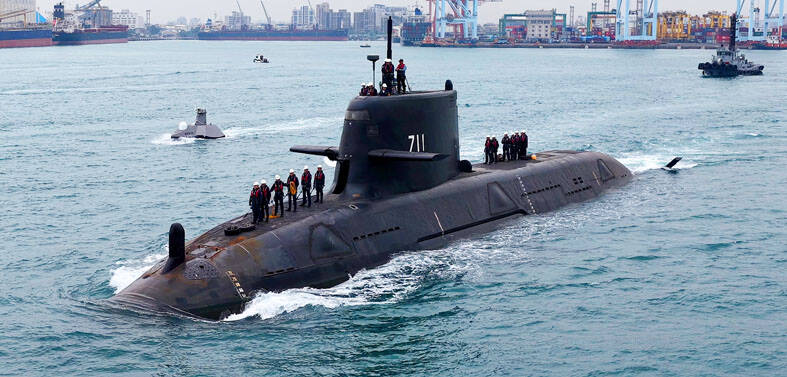Despite the central government's decision to make Tongyong Pinyin the official system for the Roman-ization of street signs, Taipei City Mayor Ma Ying-jeou (馬英九) yesterday remained firm in his stand that the Taipei City Government would continue using Hanyu Pinyin as its Romanization standard.
On Thursday, a consensus to use Tongyong Pinyin was reached between various ministries and local governments at a meeting held by the Ministry of Education, the ministry which had officially approved the system last month.
"The consensus reached [by various government agencies on Thursday] to use Tongyong Pinyin does not have any bearing on us, so the Taipei City Government will keep on using Hanyu Pinyin," Ma yesterday told an audience at the opening ceremony of the Guo Yuan-yi Pastry Museum.
Using the name of the museum as an example, as well as that of the National Palace Museum and all museums around the world, "which all use Hanyu Pinyin," Ma reiterated that Hanyu Pinyin is the international trend for the Romanization of Mandarin Chinese.
Wu Yu-sheng (吳育昇), the Taipei City government's spokesman, told the Taipei Times yesterday that, "since a conclusion that was made during that meeting stated that it is not compulsory for all cities and counties to use Tongyong Pinyin, we [Taipei City] will keep using the Hanyu Pinyin System, which is more user-friendly to the vast number of expatriates in town."
As an alternative solution, Kang Tsung-hu (康宗虎), deputy director of the city's Bureau of Education, added that the city would also consider the possibility of using both Hanyu and Tongyong Pinyin for the city's place names and road signs.
Thursday's meeting was attended by representatives from various government agencies, such as the Ministry of Education, the Ministry of the Interior, the Ministry of Economic Affairs, the Ministry of Foreign Affairs, the Ministry of Transportation and Communications and a number of local governments. Measures drafted during the meeting will be sent to the Cabinet for review.
One of these draft measures calls for authorities to instruct the National Central Library to develop a computerized Romanization system for the conversion of Chinese characters into Tongyong by the end of this year.
The Ministry of Foreign Affairs would also work to amend the relevant laws and to have people's passport names Romanized according to Tongyong Pinyin by next June at the earliest.
The Ministry of Economic Affairs and the Government Information Office would coordinate seminars for Taiwan's expatriates to familiarize them with the Tongyong Pinyin system. These two bodies will also promote the use of the system to firms so that the companies can use it on their products.

US climber Alex Honnold is to attempt to scale Taipei 101 without a rope and harness in a live Netflix special on Jan. 24, the streaming platform announced on Wednesday. Accounting for the time difference, the two-hour broadcast of Honnold’s climb, called Skyscraper Live, is to air on Jan. 23 in the US, Netflix said in a statement. Honnold, 40, was the first person ever to free solo climb the 900m El Capitan rock formation in Yosemite National Park — a feat that was recorded and later made into the 2018 documentary film Free Solo. Netflix previewed Skyscraper Live in October, after videos

NUMBERS IMBALANCE: More than 4 million Taiwanese have visited China this year, while only about half a million Chinese have visited here Beijing has yet to respond to Taiwan’s requests for negotiation over matters related to the recovery of cross-strait tourism, the Tourism Administration said yesterday. Taiwan’s tourism authority issued the statement after Chinese-language daily the China Times reported yesterday that the government’s policy of banning group tours to China does not stop Taiwanese from visiting the country. As of October, more than 4.2 million had traveled to China this year, exceeding last year. Beijing estimated the number of Taiwanese tourists in China could reach 4.5 million this year. By contrast, only 500,000 Chinese tourists are expected in Taiwan, the report said. The report

Temperatures are forecast to drop steadily as a continental cold air mass moves across Taiwan, with some areas also likely to see heavy rainfall, the Central Weather Administration (CWA) said. From today through early tomorrow, a cold air mass would keep temperatures low across central and northern Taiwan, and the eastern half of Taiwan proper, with isolated brief showers forecast along Keelung’s north coast, Taipei and New Taipei City’s mountainous areas and eastern Taiwan, it said. Lows of 11°C to 15°C are forecast in central and northern Taiwan, Yilan County, and the outlying Kinmen and Lienchiang (Matsu) counties, and 14°C to 17°C

STEERING FAILURE: The first boat of its class is experiencing teething issues as it readies for acceptance by the navy, according to a recent story about rudder failure The Hai Kun (海鯤), the nation’s first locally built submarine, allegedly suffered a total failure of stern hydraulic systems during the second round of sea acceptance trials on June 26, and sailors were forced to manually operate the X-rudder to turn the submarine and return to port, news Web site Mirror Daily reported yesterday. The report said that tugboats following the Hai Kun assisted the submarine in avoiding collisions with other ships due to the X-rudder malfunctioning. At the time of the report, the submarine had completed its trials and was scheduled to begin diving and surfacing tests in shallow areas. The X-rudder,